

Max Davies
2026 Toyota HiAce review
4 Hours Ago
James Wong hits the streets of Barcelona in the Kia Niro HEV as he explores the Spanish region on a European holiday.



Quickly see how this car stacks up against its competition. Select any benchmark to see more details.
Where expert car reviews meet expert car buying – CarExpert gives you trusted advice, personalised service and real savings on your next new car.
“Do as the locals do” is a common line of advice when travelling – as a car guy, driving on the same roads as locals is my idea of doing just that.

Off the back of the BMW i5 launch in Portugal, I took the opportunity to visit my relatives in Barcelona and was fortunate enough to wrangle a Kia Niro HEV for the near week-long stay there.
I figured it would be a different way to see my Mum’s homeland, and give me the opportunity to explore solo (which I did). It would also give me the chance to try the Niro in a different setting – with higher-speed roads and differing landscapes, for starters.
The decked-out test car supplied to us also featured some things that we don’t get here in Australia, which I will touch on in the review.
Gracias to our friends at Kia Spain for our loan of the Niro HEV while I was abroad!
The top-spec Niro HEV Emotion I drove in Spain retails from €34,954 in Spain, which works out to $58,329 AUD. In Australia, the equivalent Niro HEV GT-Line lists for $50,580 plus on-road costs.
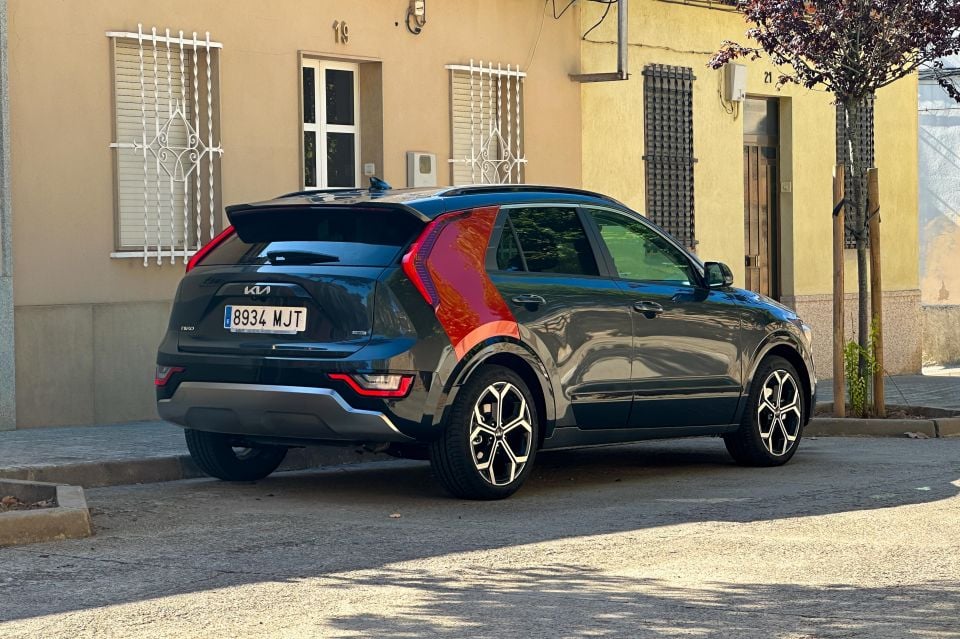
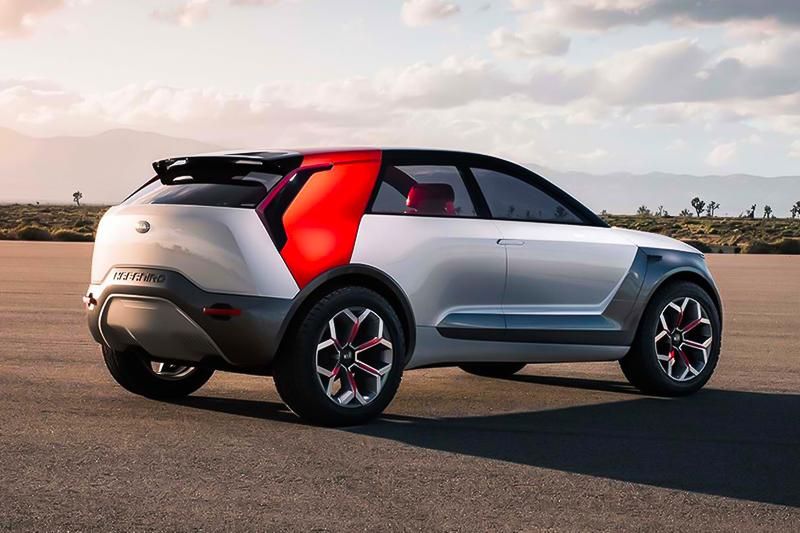
While the boxy electrified Kia is something of a premium proposition in the Australian market, it’s well positioned in Spain against the likes of the Honda HR-V e:HEV (from €35,010/$58,321 AUD), Nissan Qashqai e-Power (from €33,150/$55,223 AUD) and Toyota Corolla Cross Hybrid (from €37,800/$62,969 AUD).
That’s in stark contrast to Down Under, where the Niro HEV GT-Line is priced in line with the larger Toyota RAV4 Cruiser 2WD Hybrid ($51,410) and the top-trim Qashqai e-Power Ti ($51,590). You can get into the HR-V e:HEV and Corolla Cross Hybrid in Australia for thousands less.
Our test car was optioned with the Pack Luxury (€2700/$ AUD) and the distinctive Orange Delight C-pillar (€150/$ AUD), bringing the as-tested price to €37,804 ($62,976 AUD). I called it the ‘HabaNiro’ spec, given the concept that previewed the latest Niro was shown in a similar colour scheme. We don’t get the orange pillar option here either.
Buy your new car without the stress. It's fast, simple and completely free.

Great service from Travis and team, second time I have used this business would not hesitate to recommend them to anyone
Craig C.
Purchased a Ford Ranger in Sunshine Coast, QLD
CarExpert helped Craig save thousands on his Ford Ranger, now let us save you on your next new car.
Find a dealOther than the dashboard being mirrored for left-hand drive, it’s all familiar fare in the Spanish-spec Niro HEV.
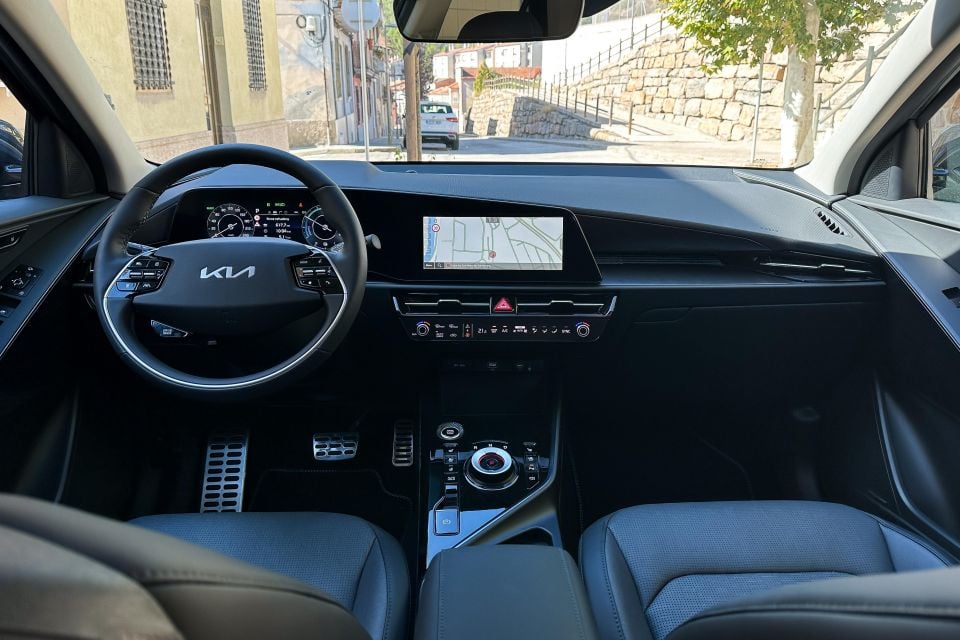
The top-spec Emotion in Spain is fitted out much like our GT-Line in Australia, though the optional Pack Luxury adds some niceties that are thus far forbidden fruit in Australian specification.
Up front the driver and passenger get heated and ventilated seats, with the pilot getting electric adjustment with memory presets – Australia misses out on the memory function for the time being.
Kia’s familiar dual-10.25-inch cockpit is here, with fully digital instruments and a touchscreen infotainment display featuring embedded satellite navigation, connected services, as well as wired smartphone mirroring.
I noticed the Euro-market Niro’s connected navigation offers insights into low-emissions zones like Barcelona’s CBD – which is cool to have in markets that require it, though the Niro HEV isn’t subject to the city’s restrictions around higher-emitting vehicles being able to enter during the week between 7:00AM and 8:00PM.

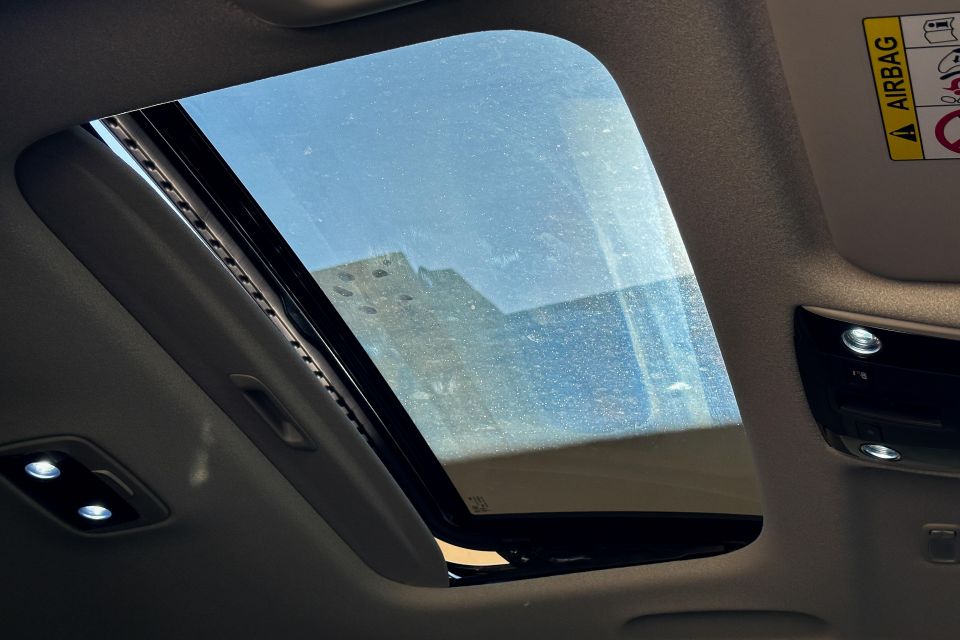
As we’ve said about the Australian model, the front seats are fine but a little wide and lacking in support. It can depend on your height and body type though – I’m a lean 6’1 and find them to be ok, though I’d like more bolstering.
The leatherette trim feels of a high quality but the interesting pattern may not be to all tastes. I also am not a huge fan of the swathes of piano black surfaces, which look great in photos and on a clean showroom car, but are very prone to fingerprints and scratches over time in the real world.
Build quality feels pretty solid, with plenty of soft-touch surfaces and a feeling of solidity how everything fits together. The configurable touch bar that doubles up as the infotainment shortcuts as well as the climate controls is also one of the better implementations of touch-based switchgear in our experience.
The open plan cockpit design also makes this otherwise little car feel very spacious. There’s a very airy feel in both rows, and there’s heaps of storage to keep your loose items stowed while in transit – the configurable cupholder section is particularly of note, as is the deep cubby under the centre console.
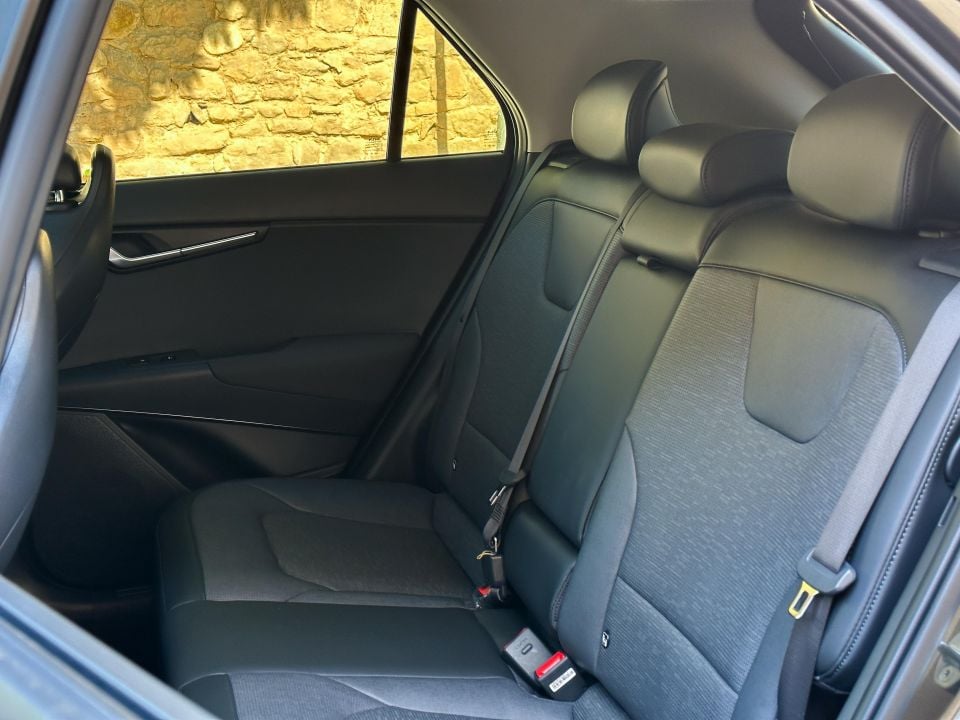
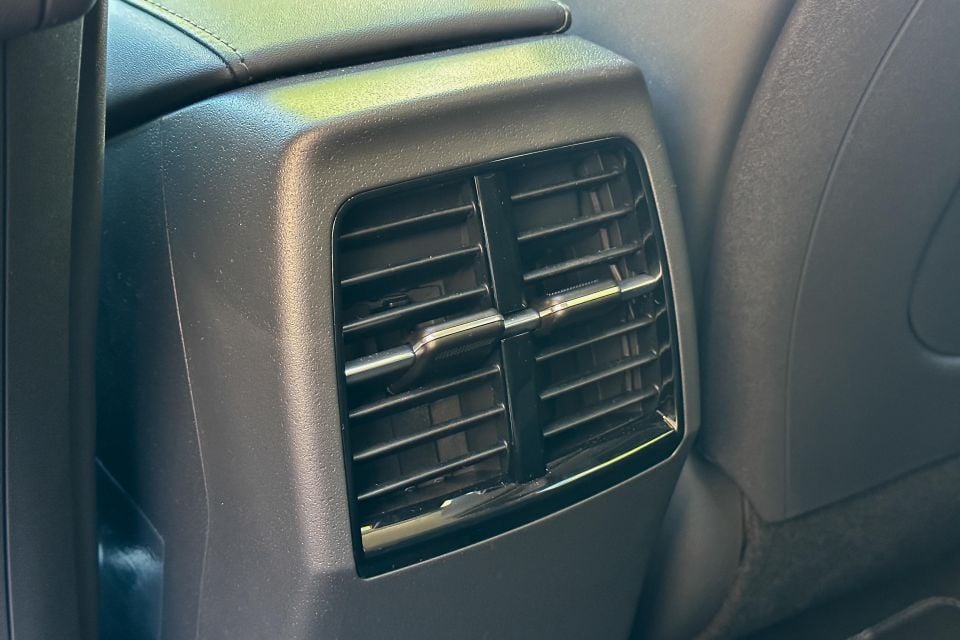
That feeling of spaciousness extends to the rear, with the Niro offering heaps of head and legroom in the second row even for taller passengers. While the rear seats are even flatter than the fronts, it means you can sit three across in better comfort if you need to squeeze more people in.
Rear air vents and a fold-down centre armrest with cupholders headline the second-row amenities, with airline-style map pockets on the front seatbacks and USB-C charge ports on the inner sides of both front seats also featuring.
The Pack Luxury option adds heated rear seats which we don’t get in Australia, a nice high-end addition, though the small sunroof doesn’t extend into the second row like larger panoramic units.
Should you want a city-friendly crossover with maximum rear passenger space – keep in mind you get the requisite anchorage for ISOFIX seats and top-tethers – this could be a quirky solution for you.
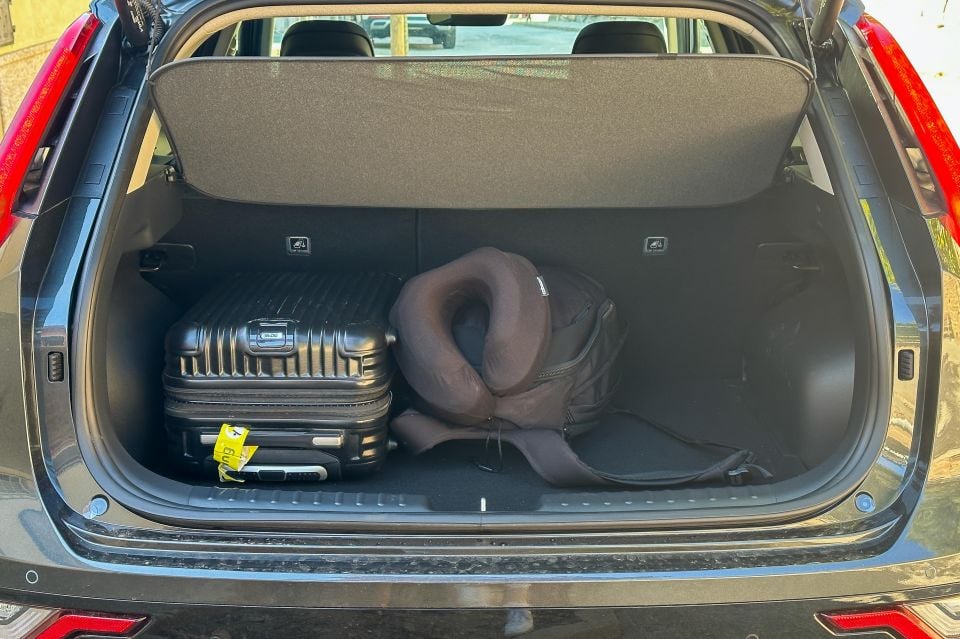
Open up the power tailgate and there’s 425 litres of luggage capacity, which is a match for vehicles in the size class above – a Mazda CX-5 offers 438L/1340L, for reference.
The area itself is wide, square and flat, and expands to an impressive 1419L with the rear seats folded. While there’s a step up to the seatbacks in its max volume setting, the floor folds upwards to even out the difference in height.
Boot features include a foldable cargo cover, as well as luggage net hooks and a light. Unlike the Niro EV, which gets a tyre repair kit, the Niro HEV comes with a space-saver spare under the floor.
Power in the Niro HEV comes from a 1.6-litre GDI naturally aspirated petrol engine teamed with a transmission-mounted permanent magnet synchronous electric motor and a 1.32kWh lithium-ion battery pack.
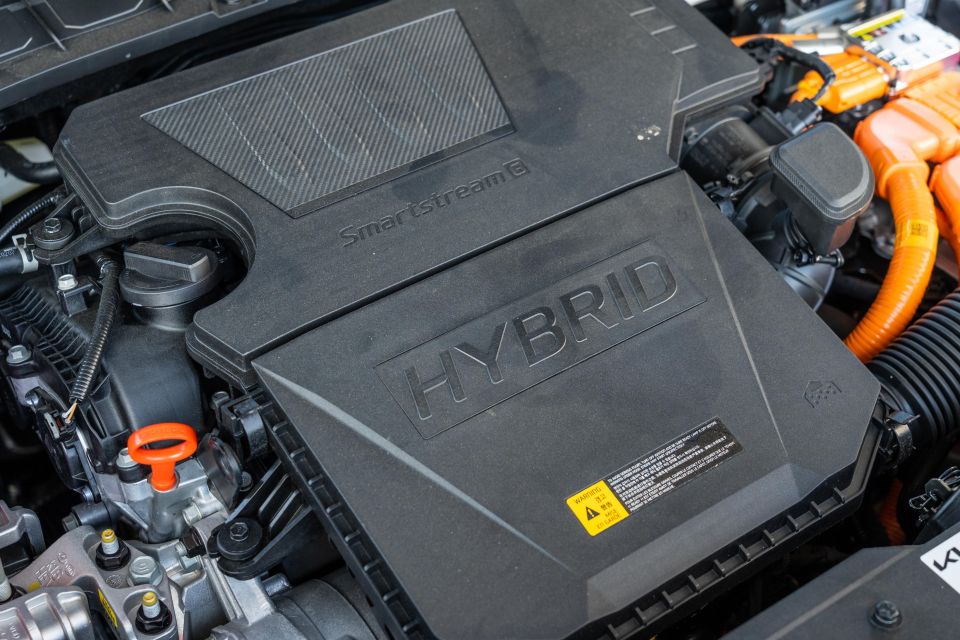
The direct-injected petrol engine develops 77.2kW (5700rpm) and 144Nm (4000rpm) on its own, while the electric motor contributes a further 32kW and 170Nm – system outputs are quoted as 104kW (5700rpm) and 265Nm (4000rpm).
Drive is sent to the front wheels via a six-speed dual-clutch transmission (DCT). Kia claims the Niro HEV GT-Line should accelerate from 0-100km/h in around 10.8 seconds, incidentally 0.4s slower than the base model in Australia.
The all-important fuel consumption figure is a thrifty 4.0L/100km on the combined cycle (ADR), with the Niro HEV rated to run on regular 91 RON unleaded. The fuel tank measures 42L, meaning theoretically you should be able to get 1000km on a tank based on Australian specifications. CO2 emissions for the Niro HEV are quoted at 91g/km.
Against tougher WLTP testing, the EU-market Niro HEV quotes consumption of 4.4-4.6L/100km, and CO2 emissions of 100-105g/km. Kia Australia says the Niro HEV can tow up to 1300kg, with a max towball download of 100kg.
The roads in Spain are a bit different than Australia, so I was really keen to see how the Niro handled the conditions in Barcelona based off my previous experience with the hybrid crossover in Melbourne.
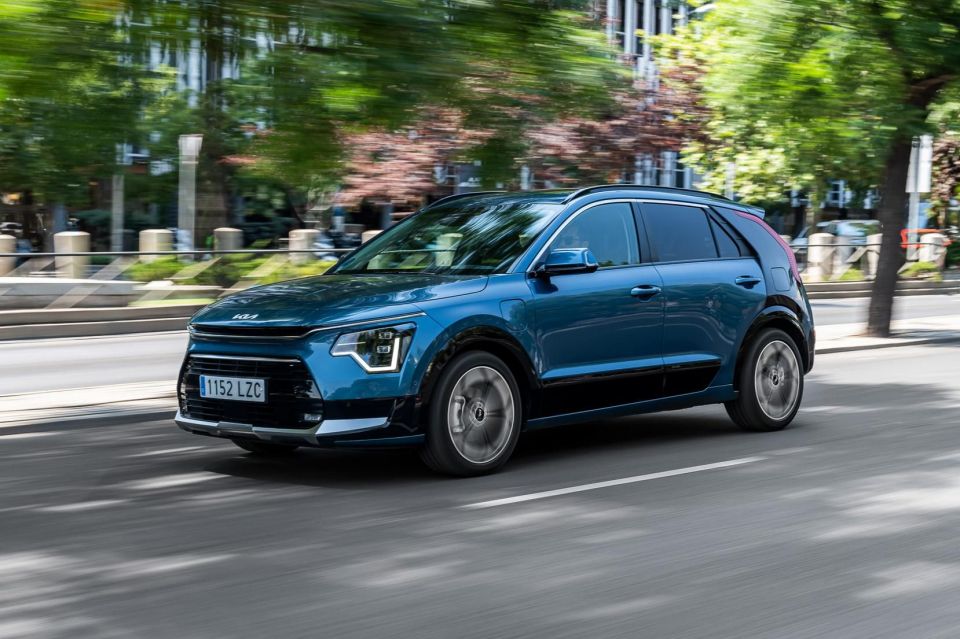
Leaving the Barcelona Airport, I took a series of highways en route to Manresa which was about an hour north of the capital, with speed limits ranging from 80 to 120km/h.
The flatter sections of four-lane highway leaving the city were no issues for the Niro at 80km/h, as it seamlessly shuffled between power sources at a cruise. Kia’s Highway Driving Assist did the bulk of the work for me, keeping a safe distance from any vehicles ahead while also keeping the Niro nicely centred in its lane.
I quickly realised lane etiquette here is far better than Down Under, with the outside lane strictly left for those wanting to overtake or travel a little quicker. I’m told speed limits aren’t strictly policed like they are here, and that was evident in the amount of motorists whizzing past me at 20-30km/h over the signed limit, usually in very regular machinery.
NVH insulation was solid even as we hit the higher-speed freeways with their Sydney-like concrete slab surface, with some tyre roar emanating from below the car at 120-130km/h, but it’s far from unrefined. Even at these speeds, the Niro HEV’s drivetrain felt more than adequate despite its measly outputs on paper.
It also rides pretty well, despite having a slightly firmer setup and our high-grade model’s larger 18-inch alloys and lower-profile 225/45 tyres compared to the 205/60 R16 rolling stock of lower variants. It’s nice and settled on the highway and handled speed humps and potholes in the Manresa township pretty well.

The naturally aspirated hybrid drivetrain does run out of puff if you try flooring it at triple figures or up hills, but it’s more than capable of happily travelling at 10-20km/h above the usual speed limits we’re used to in Australia.
Even at 120km/h you’ll see the little EV mode light up as the Niro slips into silence when coasting or going doing hills to save fuel, and it’ll fire up again quickly when you hit the throttle and require the full 104kW and 265Nm on tap. At full throttle, the cabin offers decent insulation from the ICE powertrain compared to some other hybrid rivals.
While the drivetrain’s outputs won’t take your breath away, the Kia makes the most of what it’s got thanks to solid low-end response from the electric motor, and a fairly seamless transition to hybrid or ICE-only power when you need a bit more. Having a DCT instead of a CVT takes some getting used to, but I prefer it from an engagement perspective.
The C-16 and C-55 highways out of Barcelona have numerous bends that are quite fun to tackle at the signed 120km/h speed limit. It was here that I was reminded of the Niro’s pretty deft handling characteristics, offering fairly flat cornering and a hunkered down, stable feel that inspires confidence in these conditions.
On one occasion I drove from Manresa to Barcelona Airport in what can only be described as torrential rain, and despite being only front-wheel drive the Niro HEV felt rock solid at freeway speeds in the wet and against crosswinds. I was very impressed.
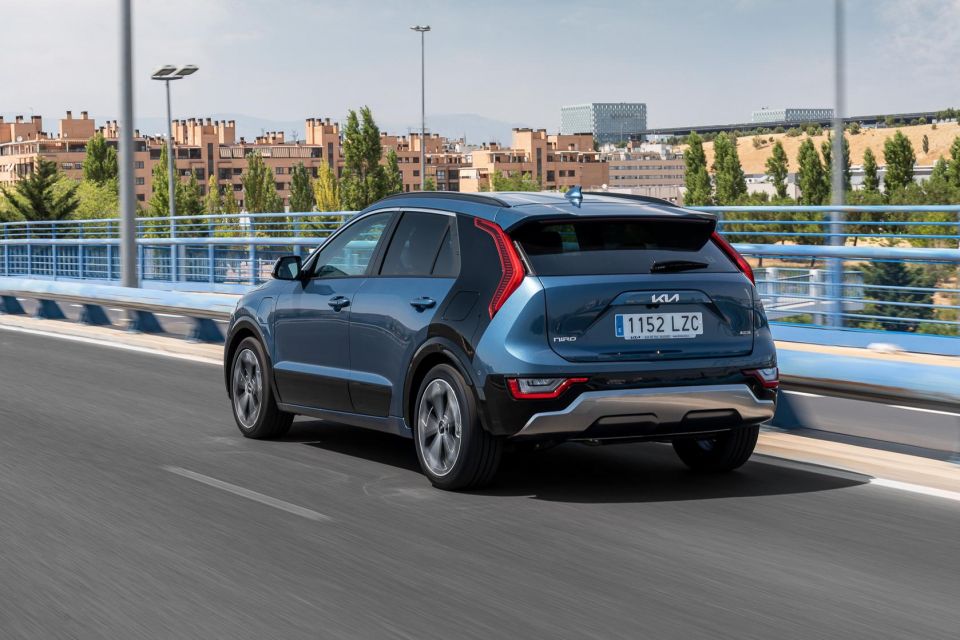
I also spent one day later on in my stay driving into Barcelona CBD – I won’t lie, I was a little daunted at first but once I hit the big smoke, the little Kia proved to be a great urban companion. Even in the tight confines of Manresa’s suburban streets, the Niro was well sized, easily manoeuvrable and spent a lot of time in EV mode to save fuel and reduce emissions.
The Niro is nicely sized for high-traffic European cities, and the tall glasshouse means visibility is pretty good save for the thick C-pillars – though blind-spot and rear cross-traffic assists will actively intervene if it detects an approaching vehicle.
A far greater portion of electric drive was done in the city too, with the signed speed limits of 30-40km/h meaning the Niro could spend more time using just e-power with the petrol engine only kicking in up sharper inclines or when we needed to make a quicker gun for it.
Fuel consumption for the week was quite impressive. I travelled 689km during my time with the Niro and averaged an indicated 5.0L/100km – I returned the car with just under a quarter of a tank. Not bad at all.
Here’s a rundown of the Australian range first.
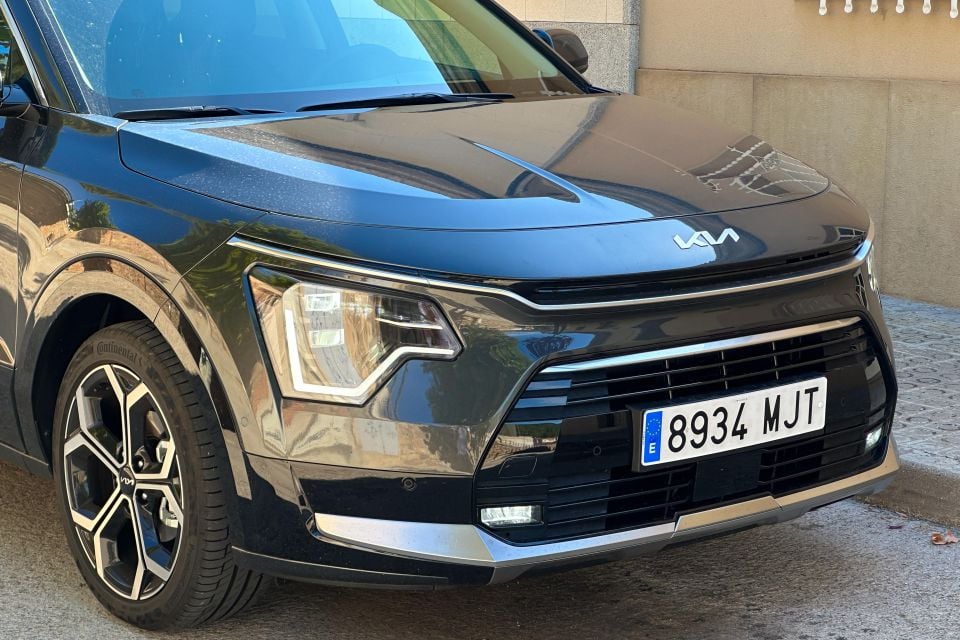
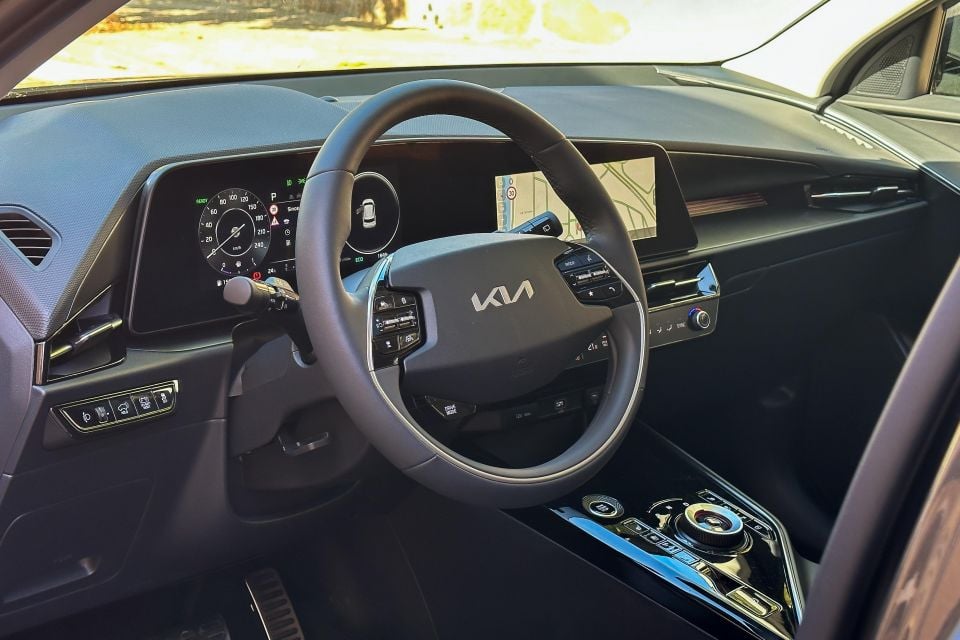
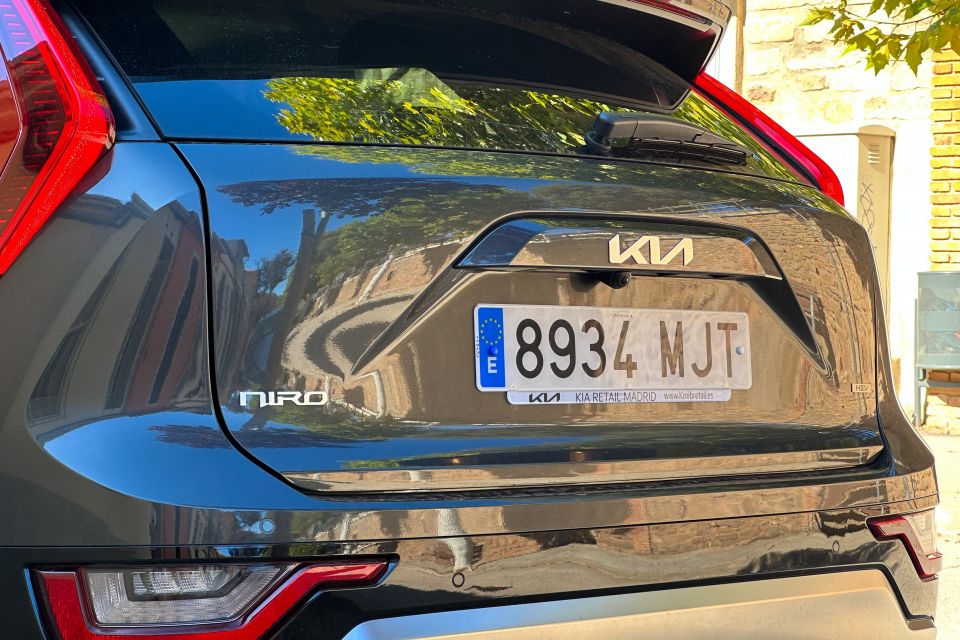

Niro HEV S highlights:
Niro HEV GT-Line adds:

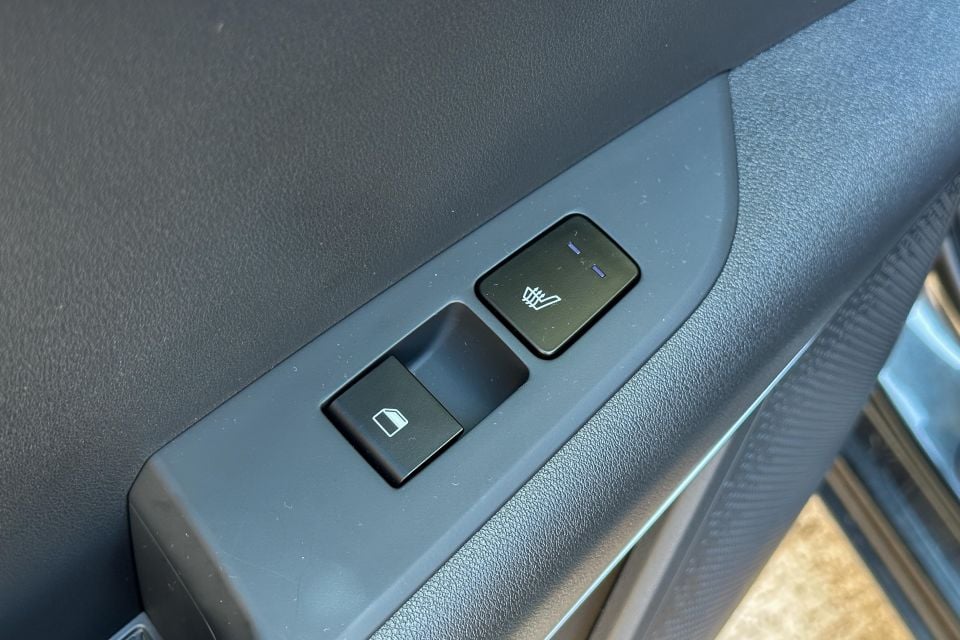
Our Spanish test car came with the optional ‘Pack Luxury’ (€2700), which adds:
Kia Australia currently doesn’t offer memory presets for the driver’s seat, heated rear seats, Premium Relaxation Seat, Harman/Kardon premium audio nor a sunroof on the local GT-Line grade. Our specification also misses out on the extended navigation functionality of the adaptive cruise control system, dubbed Highway Driving Assist.
This semi-autonomous assistance feature automatically turns on adaptive cruise and lane centring on the highway, can slow the car for corners on freeways, and can automatically adjust the set speed to follow signed speed limits. I’ll cover the real-world functionality in the driving section.
It’s a shame that the Niro HEV doesn’t offer the full catalogue of available features in Australia despite its premium pricing Down Under. Perhaps more odd is the fact that some of these features are offered on the Niro EV GT-Line locally.
The latest Kia Niro range is covered by a five-star ANCAP safety rating with 2022 datestamp, based on Euro NCAP testing of the Niro EV.

Where expert car reviews meet expert car buying – CarExpert gives you trusted advice, personalised service and real savings on your next new car.
It scored 88 per cent for adult occupant protection, 84 per cent for child occupant protection, 76 per cent for vulnerable road user protection and 87 per cent for safety assist.
Standard safety equipment includes:
Like the wider Kia range, the Niro is backed by a seven-year, unlimited-kilometre warranty in Australia. Further, the high-voltage components (e.g. battery, e-motor) are covered for seven years or 150,000 kilometres.
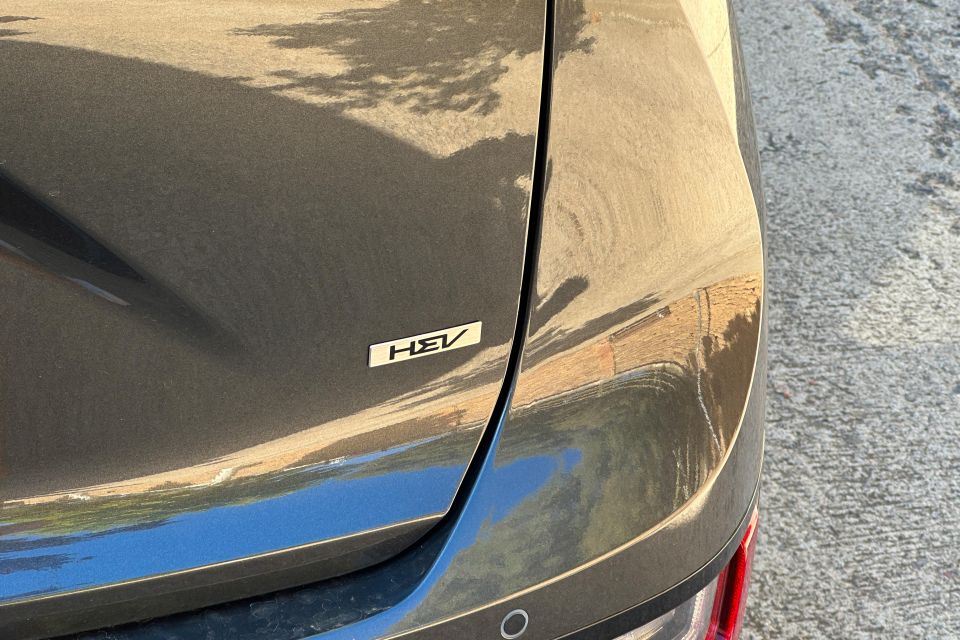
Scheduled maintenance is required every 12 months or 15,000 kilometres – whichever comes first. While the length of the program is a positive, the exxy pricing per visit is not.
Kia Niro HEV service pricing:
While a niche offering in Australia, it’s easy to see why the Niro remains quite a popular car in Europe and the UK.
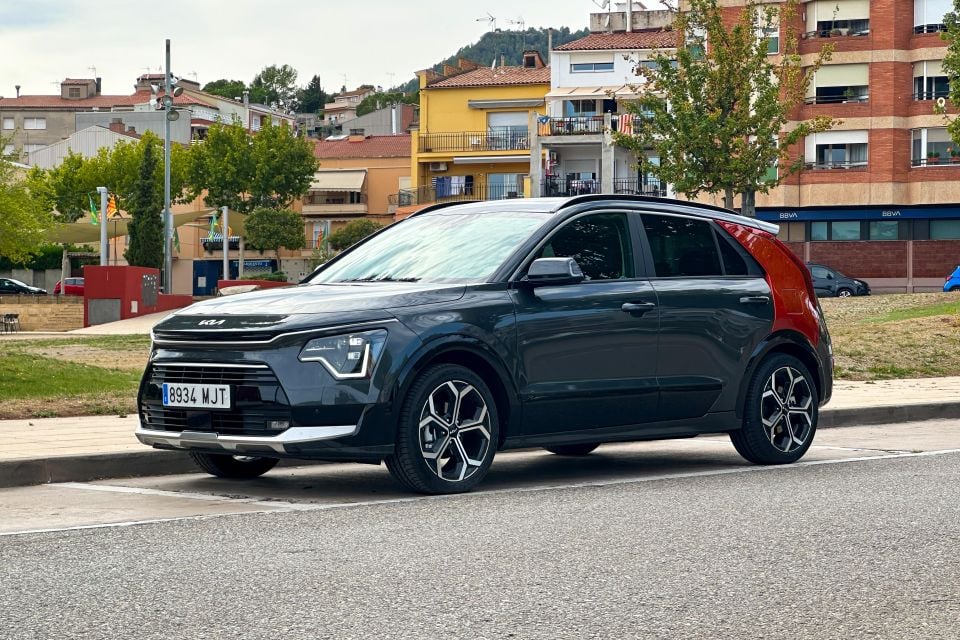
My time with the Niro HEV in Barcelona proved just how capable and efficient the electrified crossover is as a daily all-rounder, but also reminded me what a shame it is that its price positioning relegates it to niche status locally.
It offers people-carrying capability that rivals vehicles from the size segment above, a decent boot and the sort of fuel efficiency that’s currently only offered by Toyota’s super thrifty hybrids. Plus, its more compact dimensions are more city-friendly, and the sportier tuning make this a bit of fun to drive in mundane everyday scenarios.
That’s why it’s such a shame the Australian model is priced so high to the point it’s often not in the consideration set for Aussie buyers. So many looking at something like a hybrid Toyota Corolla Cross or RAV4 but not willing to sit in line for two years could be so well served by the Kia – if the funky looks don’t turn you off.
If Kia’s local arm can re-position the Niro HEV so that our GT-Line, with all the fruit available in this EU-spec model, came in with an asking price starting with a ‘4’, I can’t see why we wouldn’t see more of them on Aussie roads. Time will tell, given the imminent arrival of the larger Sportage Hybrid and all-electric EV5 in 2024 could mean the Niro’s future here may be in doubt.
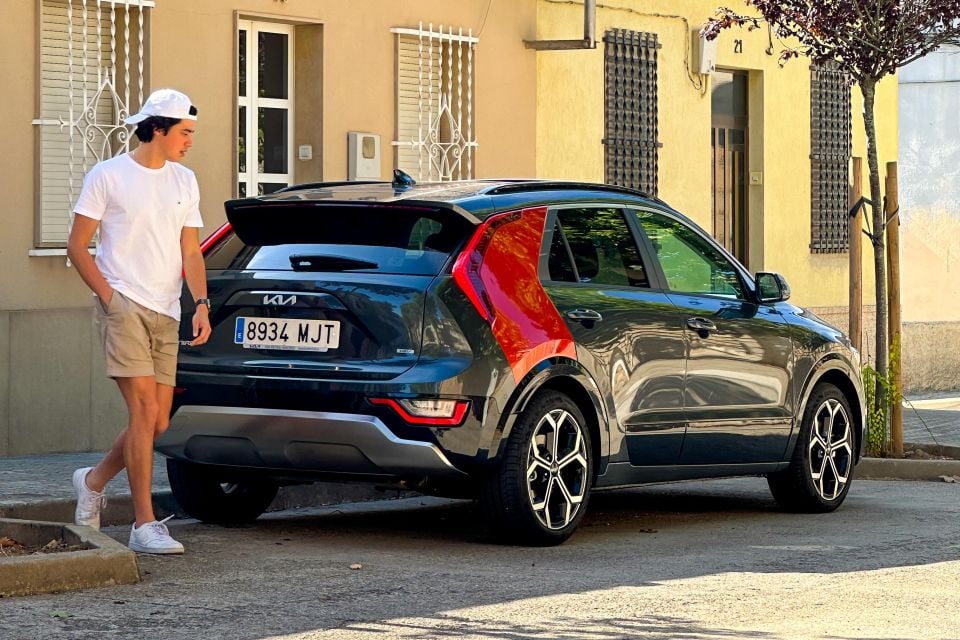
Click the images for the full gallery, and watch a quick video of one of my day trips here
BUY: Kia Niro MORE: Everything Kia Niro
Where expert car reviews meet expert car buying – CarExpert gives you trusted advice, personalised service and real savings on your next new car.
James Wong is an automotive journalist and former PR consultant, recognised among Australia’s most prolific motoring writers.


Max Davies
4 Hours Ago


William Stopford
20 Hours Ago


Ben Zachariah
21 Hours Ago


Derek Fung
21 Hours Ago


Matt Campbell
1 Day Ago


William Stopford
2 Days Ago